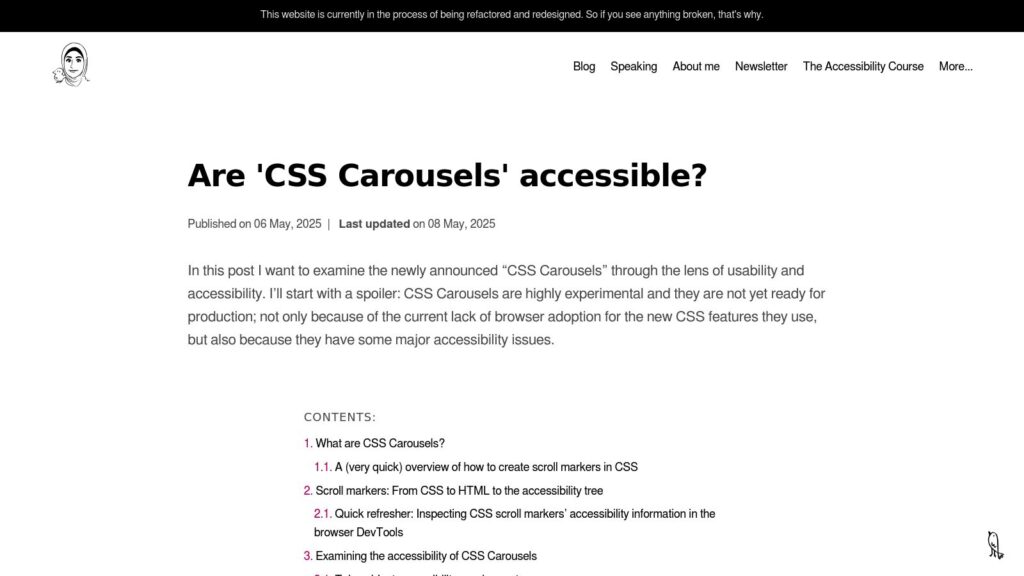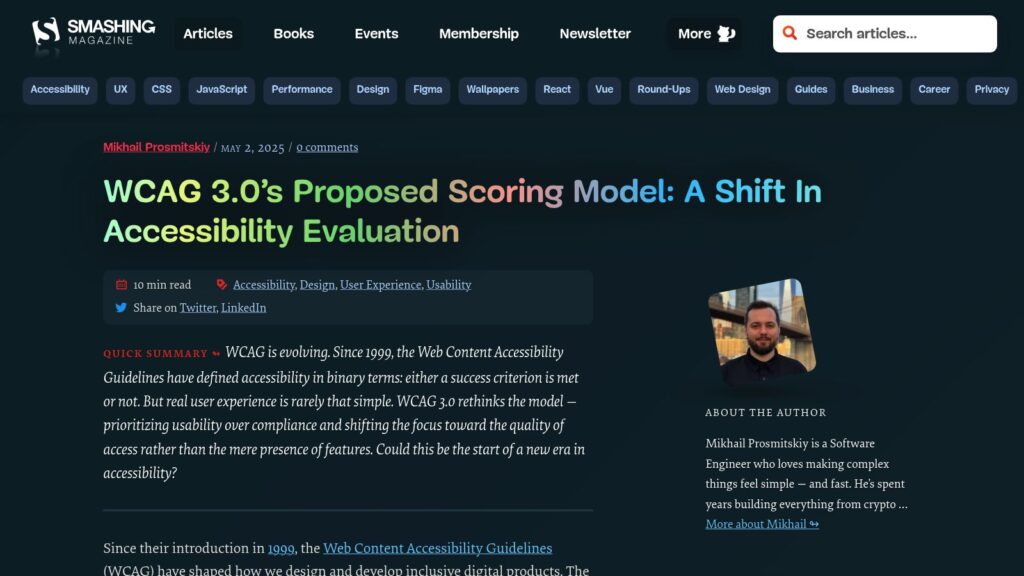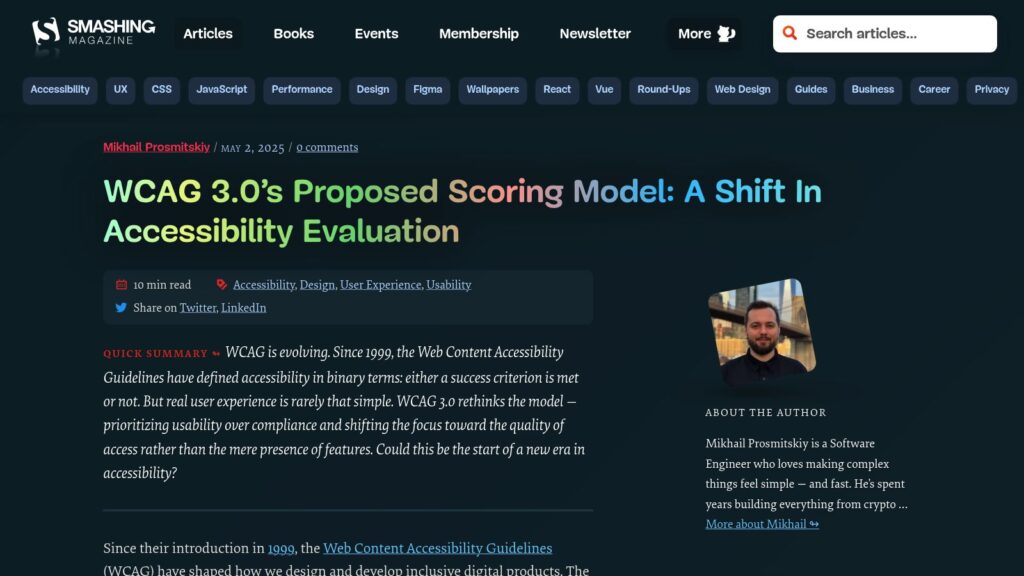A11y 101: How to Test Manually
Manual accessibility testing requires multiple tools: a computing device, screen readers (like NVDA), Chrome browser, spreadsheets for logging issues, and contrast checkers. Start with a site scope and objective, then test with mouse and keyboard navigation, followed by screen reader checks and color contrast analysis. Finally, assess writing clarity based on target audiences. Document findings and prioritize key issues for client follow-up, emphasizing continued support and training for ongoing improvement.
https://tarnoff.info/2025/05/15/a11y-101-how-to-test-manually/





